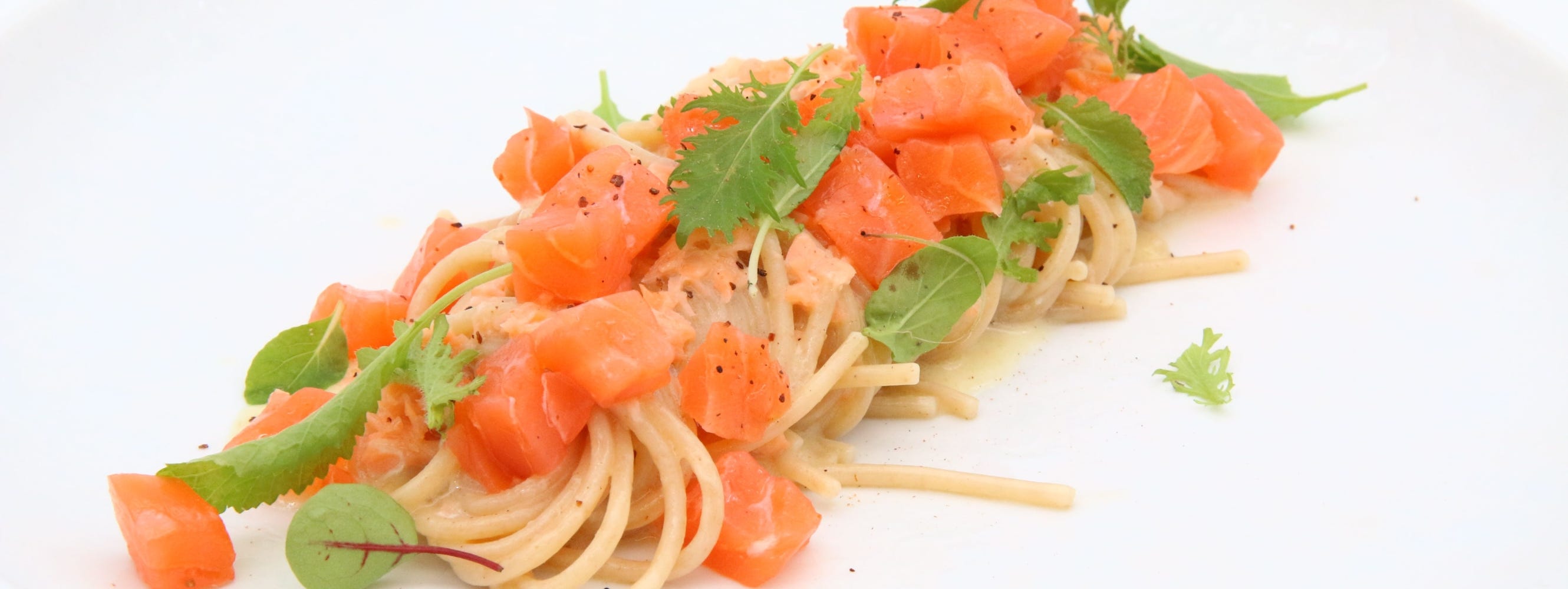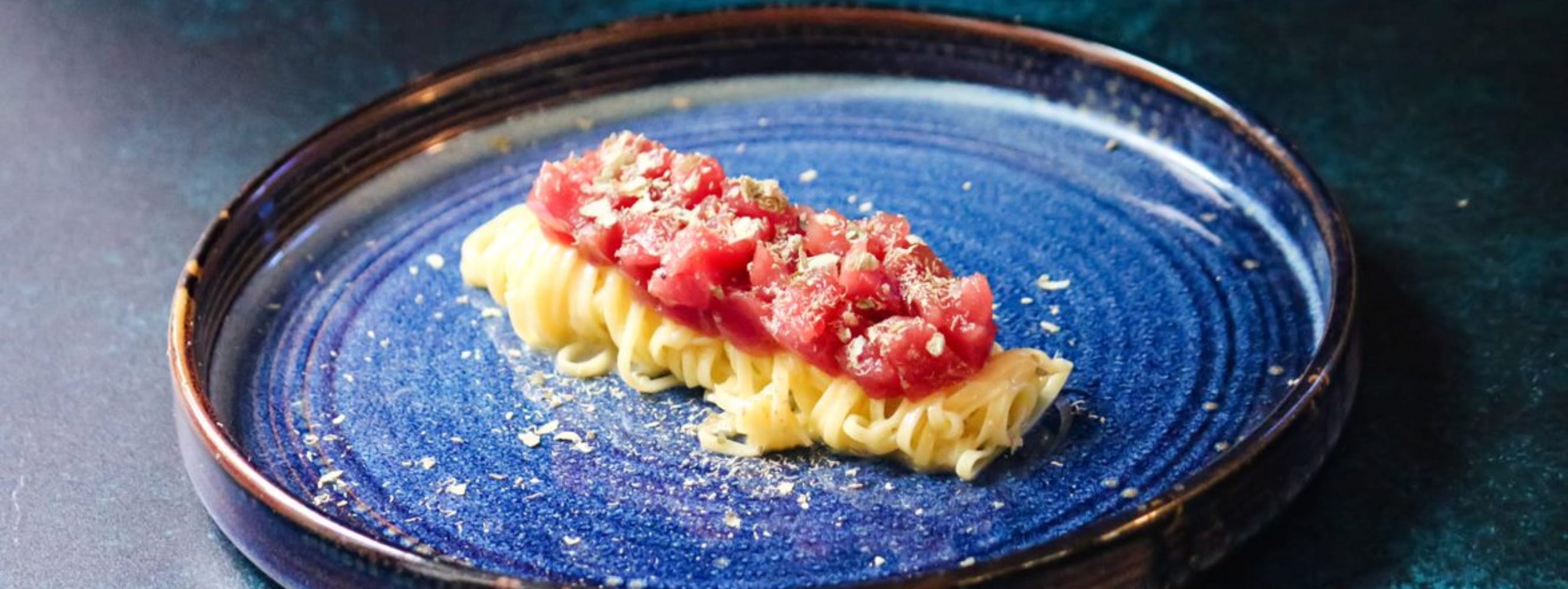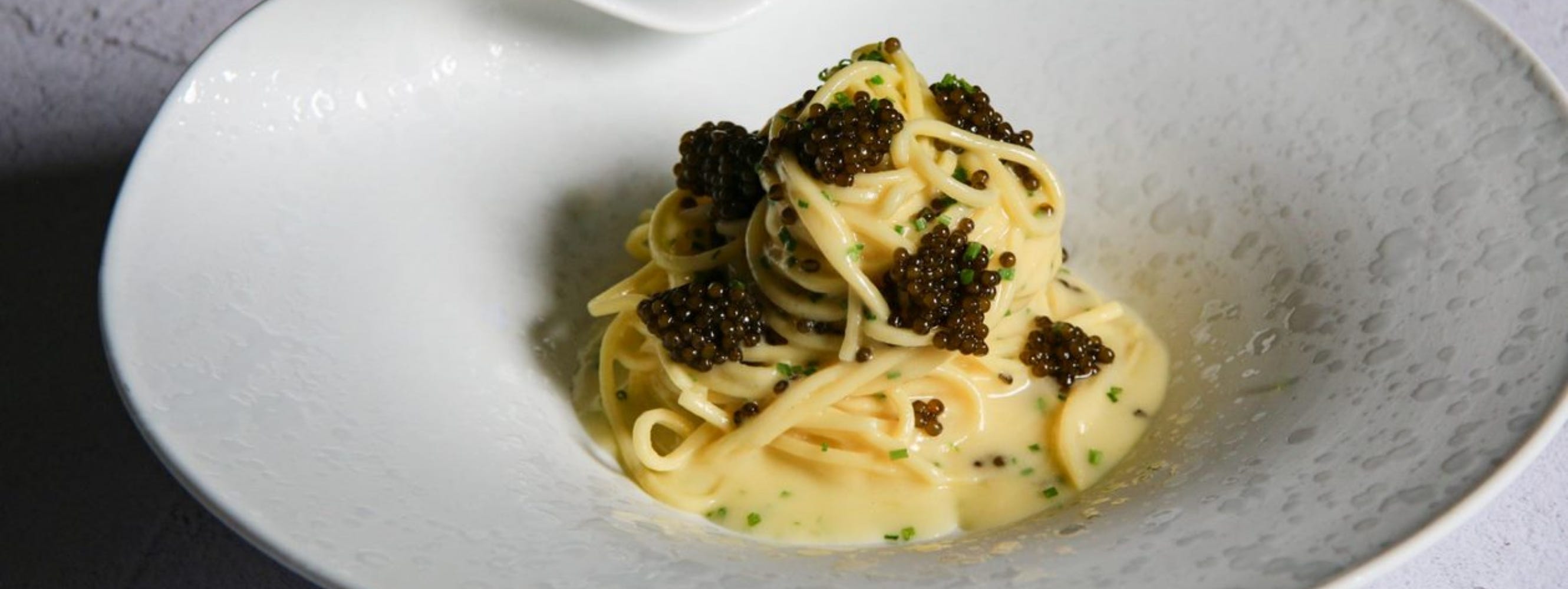Summer pasta with fish sauces
Which type of pasta to choose for amazing gourmet fish sauces
Spaghetti or penne pasta, fresh egg pasta or dry pasta? If you have ever wondered how many classic Italian pasta types there are, know that the answer is more than 300! Choosing the type of pasta is always a dilemma when preparing a pasta dish. But have you ever paused to think about what is the best match for each pasta type?
Each pasta type tells about cultures and traditions, but also about art and creativity in cooking. The shape of the pasta, its thickness, and its ingredients determine the best cooking and pairings. Among the most sophisticated pairings are without a doubt fish sauces, and choosing the right pasta type is essential to enhance the flavors of the sea and create refined dishes. So let's explore the history of the most beloved pasta types and the best fish sauces to pair with them.
Popular types of pasta: spaghetti or linguine?
For a long time it was believed that it was Marco Polo who imported spaghetti from China, and although this is only a myth, it seems instead to be established that a pasta with a shape similar to spaghetti originated in an area of Asia that today overlaps with Pakistan.
Today, spaghetti is one of the most versatile and beloved pasta types in Italian cuisine. This long, thin, cylindrical-shaped pasta tends to catch sauces and toppings well, such as a cream and salmon sauce. Cream and salmon pasta will take you back in time to revive the 1980s. The combination of cream and smoked salmon creates a pleasant and harmonious balance of flavors. The cream, with its creamy texture and sweet taste, goes perfectly with the savory and smoky notes of the salmon. In this quick and easy recipe, spaghetti is the perfect pasta to create a delicious enveloping cream for a colorful and eye-catching presentation.
Linguine, with their thin, flat shape, are the ideal pasta type for a variety of fish and shellfish toppings. Not surprisingly, lobster linguine and linguine allo scoglio are two of the most popular Italian dishes during holidays and important occasions. Not everyone knows, however, that this pasta type originated in Genoa and is often used to prepare linguine with basil pesto, green beans and potatoes.
Thanks to its flattened, rectangular shape, linguine manages to capture the sauce, resulting in a creamy pasta dish. Our proposal for this delicious pasta type is a dish of linguine with black garlic, red shrimp and burrata cheese. In this recipe, which is perfect as a summer first course, the balance of flavors takes center stage. The slightly pungent aroma of fermented black garlic goes perfectly with the sweetness of the Sicilian red shrimp and the enveloping creaminess of burrata cheese.


The traditions of Piedmont and Emilia: tagliolini and tagliatelle
And here we come to a very special egg pasta type: tagliolini, also known as tajarin. This is a variety of fresh pasta typical of Piedmontese gastronomic culture, specifically of the farmsteads in the Langhe area. This pasta is long, thin and bright yellow in color given by the heavy use of egg yolks. In fact, traditional purists will argue that 30 yolks are needed for every kilogram of flour. To make tajarin you need wheat flour, egg yolks and salt-nothing more.
That of tajarin is a quick and very simple pasta recipe, but one that requires well-trained arms to work the dough into a very thin sheet. The classic sauce for tagliolini is a meat, sausage or roast sauce, but our idea is to clear the myth that egg pasta cannot be paired with fish. We therefore propose the recipe for tagliolini with red tuna tartare and dehydrated capers to bring to the table a truly refined and elegant seafood pasta course, but above all light thanks to the fresh aroma of red tuna.
According to an Emilian legend, tagliatelle was invented in the late 1400s by master Zefirano da Bologna, the cook of the nobleman Giovanni II di Bentivoglio. It was Lucrezia Borgia, future wife of Duke Alfonso d'Este, with her beautiful blond hair who inspired this type of fresh pasta. Regardless of the truth of the fact, sfogline (pasta ladies) certainly existed in old Emilia. These ladies are still dedicated to making the pasta sheets for lasagna, tortellini, pappardelle and the unforgettable tagliatelle.
This pasta is often associated with Bolognese ragù, a riot of flavors and aromas that fill the air. The recipe for ragù alla Bolognese is protected by the Chamber of Commerce, which deposited the original recipe in 1972. The width of the tagliatelle is also well defined: they must correspond to the 12270th part of the height of the Asinelli Tower of Bologna, so 8 millimeters. Again, we want to give tradition a modern twist by presenting sea urchin tagliatelle. A dish ready in a few minutes, evoking the smell and taste of the sea through the aroma of sea urchins, combined with the softness of egg noodles.


Gourmet seafood pasta with caviar
Chitarrine or spaghetti alla chitarra? Depending on the Italian region of reference, this pasta type is called by different names. Widespread in central and southern Italy, especially in Abruzzo, spaghetti alla chitarra is like small square noodles, with a thickness of no more than 3 millimeters. The origin of the name chitarrine comes from the tool with which they were prepared in the past, which was similar to a guitar, formed by a rectangular wooden frame with steel wires through which the pasta sheet passed to be cut.
Our idea of a gourmet pasta course is with caviar and bergamot essence, a fish dish that represents luxury in the kitchen as well as great elegance, worthy of a starred restaurant. The special feature of this dish lies in the choice of the highest quality ingredients. Only durum wheat semolina, eggs and a pinch of salt for a pasta with a rough texture that is whisked with raw-milk butter, and then the dish is finished with an addition of chives, bergamot essence and the chefs' favorite, the famous Kaluga Amur caviar.







